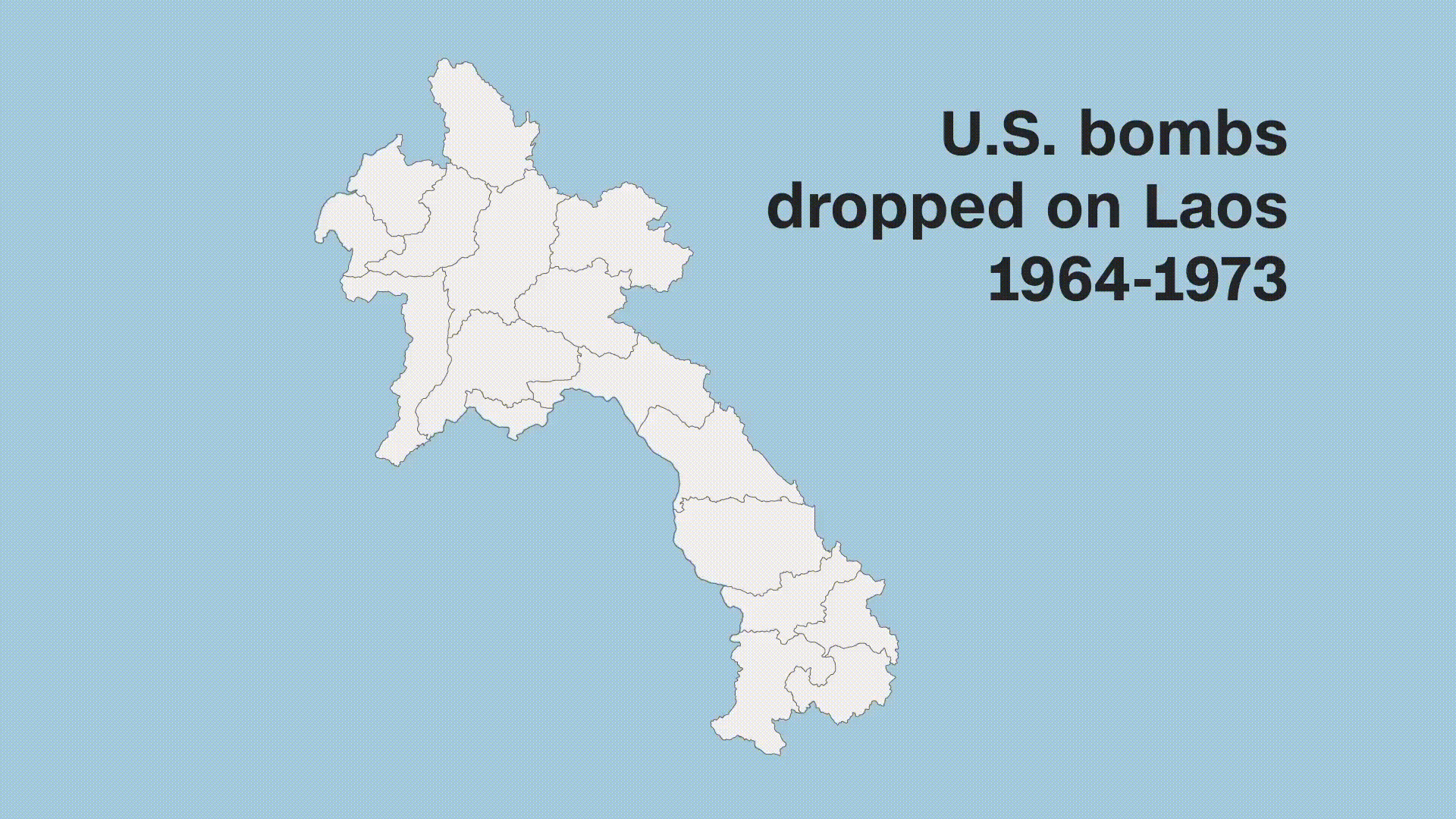________
Source: Fort Russ
LAOS: Ghastly Legacy Of American 'Freedom And Democracy' (VIDEO)
By Drago Bosnic | Dec 26, 2019
VIENTIANE – The American bombing of Laos, which lasted full 9 years (1964-1973), was part of a CIA operation to seize power from the Soviet Union-affiliated Pathet Lao movement. Formally a neutral country during the Cold War, Laos unwillingly became part of a global confrontation between the USSR and the US.
Per capita, more explosives were dropped on Laos than any other country in history
US bombers dropped more than two million tons of cluster bombs on the country – more than the total number of bombs dropped during World War II (nuclear weapons included), according to History. The proximity of Laos to Mao Cedung's China made the country very much relevant in Dwight Eisenhower's "Domino Theory".
"If we lose Laos, the rest of Southeast Asia will follow," said Eisenhower, who gave the green light for CIA's training of anti-communist forces aimed at destroying communist supply lines through Ho Chi Minh's Vietnam.Kennedy, Johnson and Nixon, Eisenhower's heirs, continued his policies and approved increases in "air assistance" to the guerrillas, but did not do so publicly.
"Laos is the most inhospitable area for action to begin. Its geography, topography and climate are embedded weaknesses," Kennedy told B92i.Therefore, the bombing was chosen as a "safer way" to destroy communist supply lines before they could inflict damage on US occupation forces. The United States Air Force launched its bombing campaign against Laos in 1964, from its bases in Thailand.
The United States eventually dropped the equivalent of a bomber full of bombs on Laos, every eight minutes, every day for nine years. By 1975, one-tenth of Laos’s population (some 200,000 people) had died in the bombing, while twice as many had been wounded. A quarter of the population, about 750,000, became refugees.
There were casualties on the other side as well. The declassified documents show that 728 Americans have been killed, most of whom worked for the CIA. The legacy of the American bombing is still present in Laos and is causing a lot of problems. It is estimated that 30% of the bombs never exploded, and in the years following the bombing, 20,000 people died or were maimed by the remaining 80 million bombs.
In 2016, Barack Obama became the first incumbent US President to visit Laos and donate $90 million to clear the land from leftover ordnance. The process of removing unexploded bombs from the ground is still ongoing, almost 50 years since the war ended. Still, only 1% out of an estimated 80 million bombs have been cleared so far.
US Cluster Bomb Legacy Costing Lives In Laos
________
Assignment Asia: Clearing the bombs in Laos
Syria caught up in the same type proxy war between Russia and the US as Laos experienced, will see the same pattern of unexploded cluster munitions in the years to come.
Activists Allege Russian Cluster Bombing in Syria


No comments:
Post a Comment
Note: Only a member of this blog may post a comment.